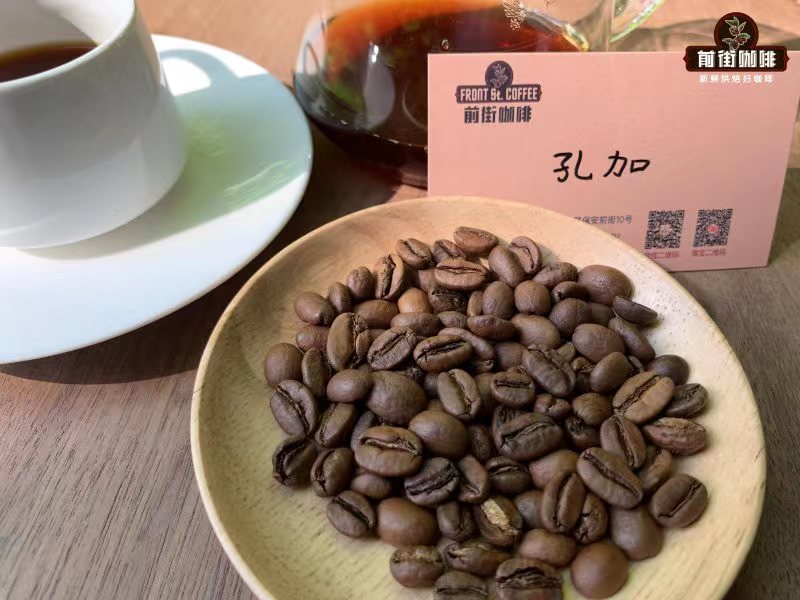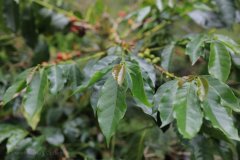Overview of Ethiopia Green Coffee beans Why buy Ethiopian Green Coffee beans
Coffee beans in the Yirgacheffe Yegashifi, Sidmao Sidamo, Harrar Hara and Limulim regions are located in the Ethiopian highlands and account for 63 per cent of Africa's contribution to the global supply of raw coffee beans according to regional symbols.
Ethiopia has long been coveted for its famous Arabica coffee tree and its aromatic and rich coffee beans. The Yirgacheffe Yegashefi Coffee Village in Sidamo Province has harvested some of the world's delicate, silky, fragrant coffee, famous for its floral nuances and rich charm. No wonder Ethiopia has a place among the top 10 producers of delicious coffee beans in the world. Ethiopian green coffee beans attract potential coffee lovers in the Middle East, North America and Western Europe, which are not found anywhere else.
Taste characteristics:
Ethiopian raw coffee beans are best associated with spicy fruit aromas and moderate to high acidity. The unparalleled Ethiopian Sidamo and Yirgacheffe Yejashafi green coffee beans know how to balance luscious and herbal flavors with floral flavors. When you drink this exhilarating taste of coffee, you will experience smooth sailing at the beginning, with the taste of citrus syrup in the middle, and finally fresh, with no trace of sour to make you feel domineering.
You will fall in love with the exquisite and complex Ethiopian coffee, which is unprecedented in variety and taste. Some Arabica coffee evokes the intestines of real Africans, and the salient flavors of tropical fruits combine the subtle flavors of mochas and flower extracts to almost smell like heaven. The over-roasting of coffee beans takes away the fine brewing and undisguised charm of authentic Ethiopian coffee. This is why handmade and well-harvested green coffee bean batches take care of the taste buds with their citrus sweetness, resulting in a delicate garden coffee finish.
Dried varieties of Sidamo and Yirgacheffe green coffee beans produce strong nutty and fruity flavors. The washed bean varieties have a citrus sour taste on the basis of light taste and spices.

Coffee growing area:
Water bodies such as moderately humid subtropical climate, high inclination and Lake Abaya have given birth to some of the oldest and highest quality coffee growing areas in the world. The famous coffee growing areas are Harrar, Sidamo, Limu and Yirgacheffe.
Harrar coffee is grown between 2200 and 2700 meters above sea level and offers a variety of binding berries. Ethiopia Harrar raw coffee beans are mostly processed by natural drying.
Sidamo Green Coffee is a wet-processed and unwashed variety of coffee beans marked by medium acidity and gray to green tones.
Limu green coffee beans are medium-bodied, green round coffee beans, mostly washed varieties.
Green beans are grown in tropical and moderately humid climates between 2000 and 2500 meters above sea level. The Chamo-Abaya Valley and Kafa Heights are home to exotic Yirgacheffe raw coffee beans and are appreciated for their unique charm. Coffee trees grow crazily with bamboo, pepper and fruit trees-symbiotic in the cradle of nature.
Why buy Ethiopian green coffee beans:
If you take a peek, almost every Ethiopian family will smell a strong smell of coffee, because coffee derived from the word "Kafa" is considered a pungent drink, first in Ethiopia.
If you want to find a clean and consistent taste in a hand-brewed coffee cup, you can't miss the authentic Ethiopian mung bean product. Serene mung beans, which contain more chlorogenic acid, have a greater impact on popular weight loss modules. Compared with regular coffee beans, raw coffee can help you combat complex health hazards such as Alzheimer's and diabetes.
Anyone who wants a delicious coffee experience that is healthy and stimulating must check with suppliers and distributors of raw Ethiopian coffee beans. They provide micro-origin and specific from the heartland of southern Ethiopia.
An overview of the complex coffee of regional coffee. Choose a variety of mixed aromas, Ethiopian green coffee beans cup test aroma, with a hint of mocha and orange blossom.
Important Notice :
前街咖啡 FrontStreet Coffee has moved to new addredd:
FrontStreet Coffee Address: 315,Donghua East Road,GuangZhou
Tel:020 38364473
- Prev

Peruvian coffee producing areas and coffee growing types are all Peruvian coffee organic?
Peru lies in the west of South America. Peru has been producing coffee since the 1700s. Peruvian coffee growers usually have small farms, but these growers have a reputation for producing high-quality shaded Arabica beans. The coffee industry is Peru's main industry, and coffee is the country's largest export. Peru is actually a major producer of organic coffee. Peru is
- Next

What's the difference between individual coffee and espresso? Is a single cup of coffee made by hand?
What is a single product coffee refers to a single product coffee made by coffee beans from a single origin can be traced back to the origin of coffee, tracing back not only to the coffee producing country, but even to the place where the coffee is produced, by knowing the owner of the coffee farm and going deep into the origin of the coffee. understand the story of the origin of coffee from the source and purchase raw beans. What is Italian coffee (Espresso)
Related
- Detailed explanation of Jadeite planting Land in Panamanian Jadeite Manor introduction to the grading system of Jadeite competitive bidding, Red bid, Green bid and Rose Summer
- Story of Coffee planting in Brenka region of Costa Rica Stonehenge Manor anaerobic heavy honey treatment of flavor mouth
- What's on the barrel of Blue Mountain Coffee beans?
- Can American coffee also pull flowers? How to use hot American style to pull out a good-looking pattern?
- Can you make a cold extract with coffee beans? What is the right proportion for cold-extracted coffee formula?
- Indonesian PWN Gold Mandrine Coffee Origin Features Flavor How to Chong? Mandolin coffee is American.
- A brief introduction to the flavor characteristics of Brazilian yellow bourbon coffee beans
- What is the effect of different water quality on the flavor of cold-extracted coffee? What kind of water is best for brewing coffee?
- Why do you think of Rose Summer whenever you mention Panamanian coffee?
- Introduction to the characteristics of authentic blue mountain coffee bean producing areas? What is the CIB Coffee Authority in Jamaica?

